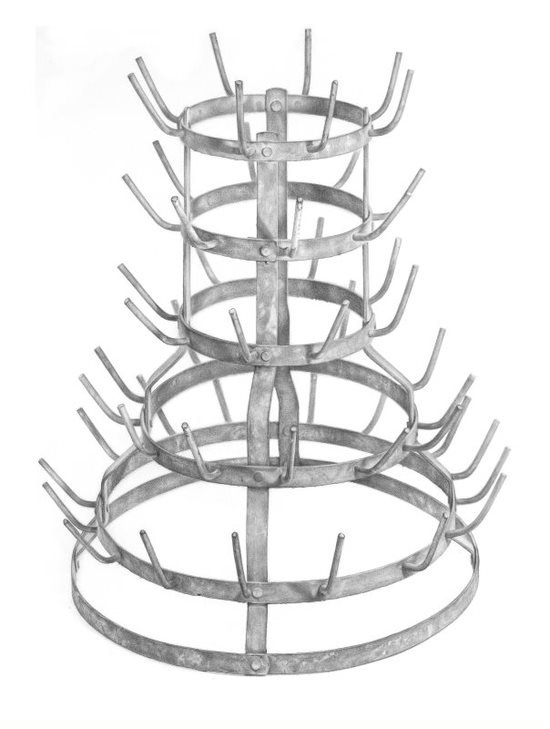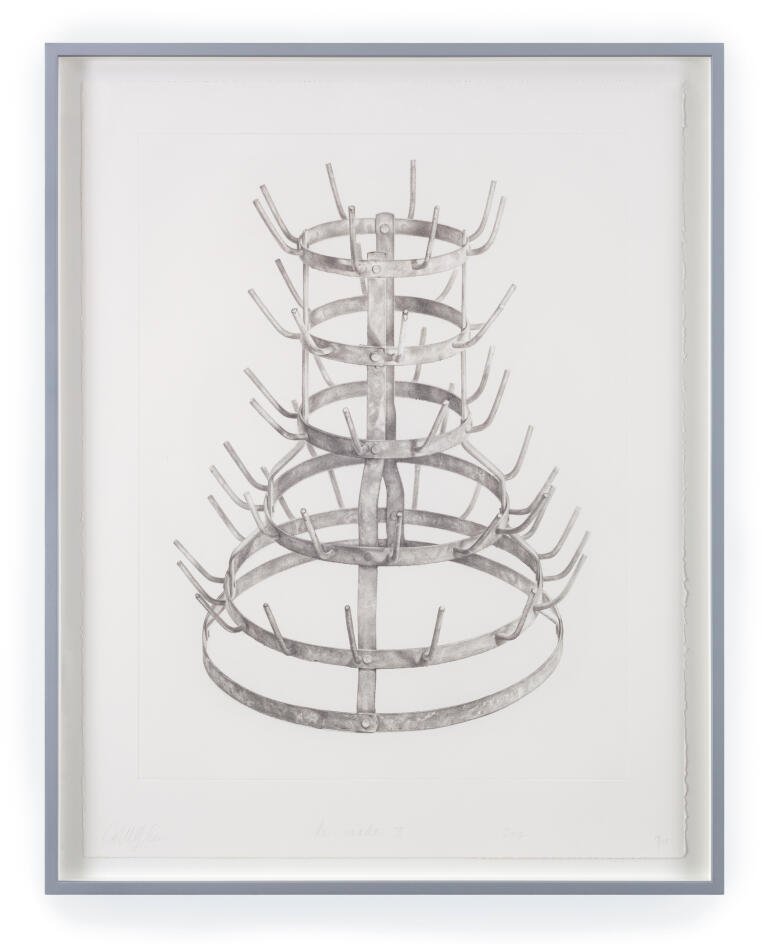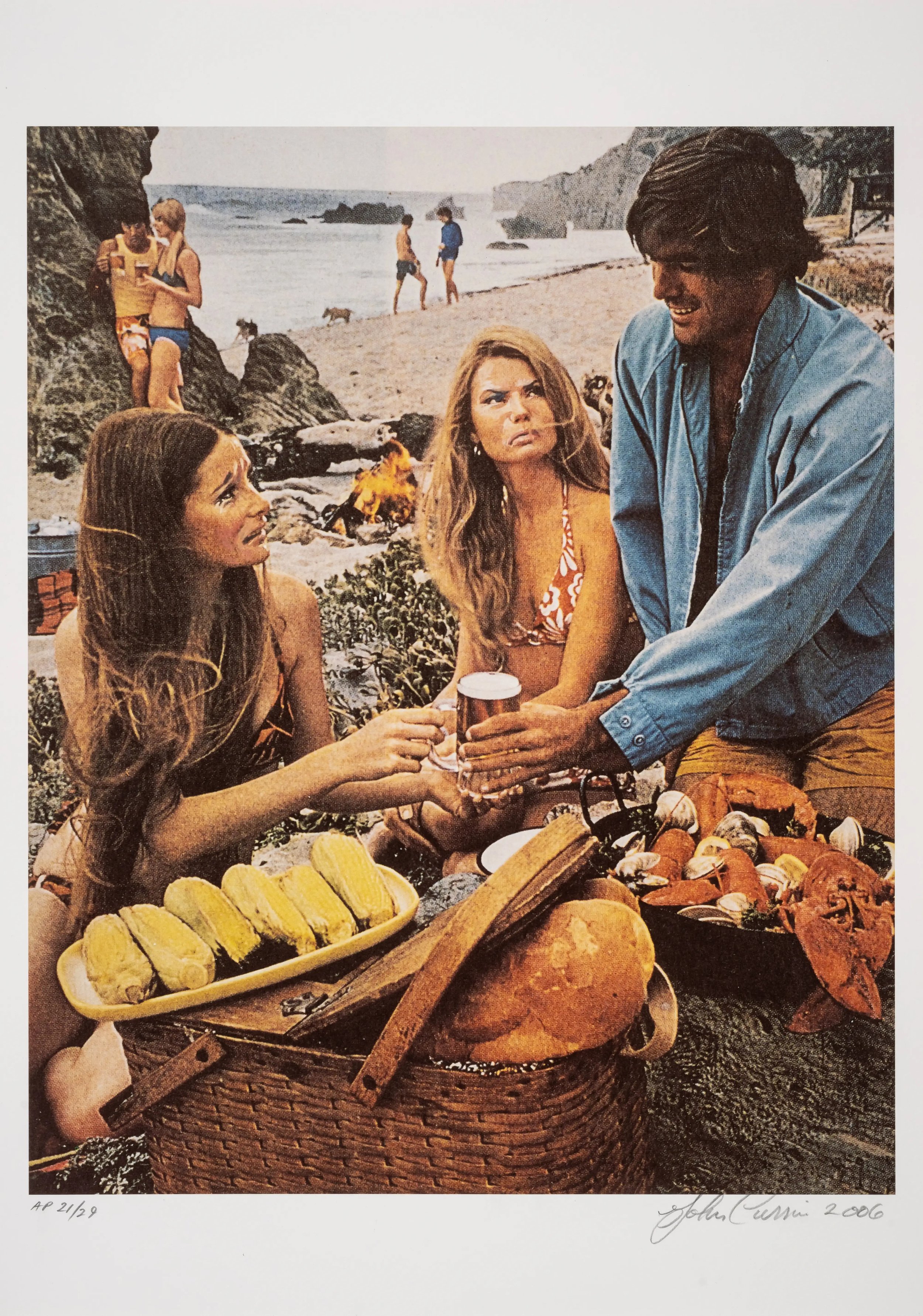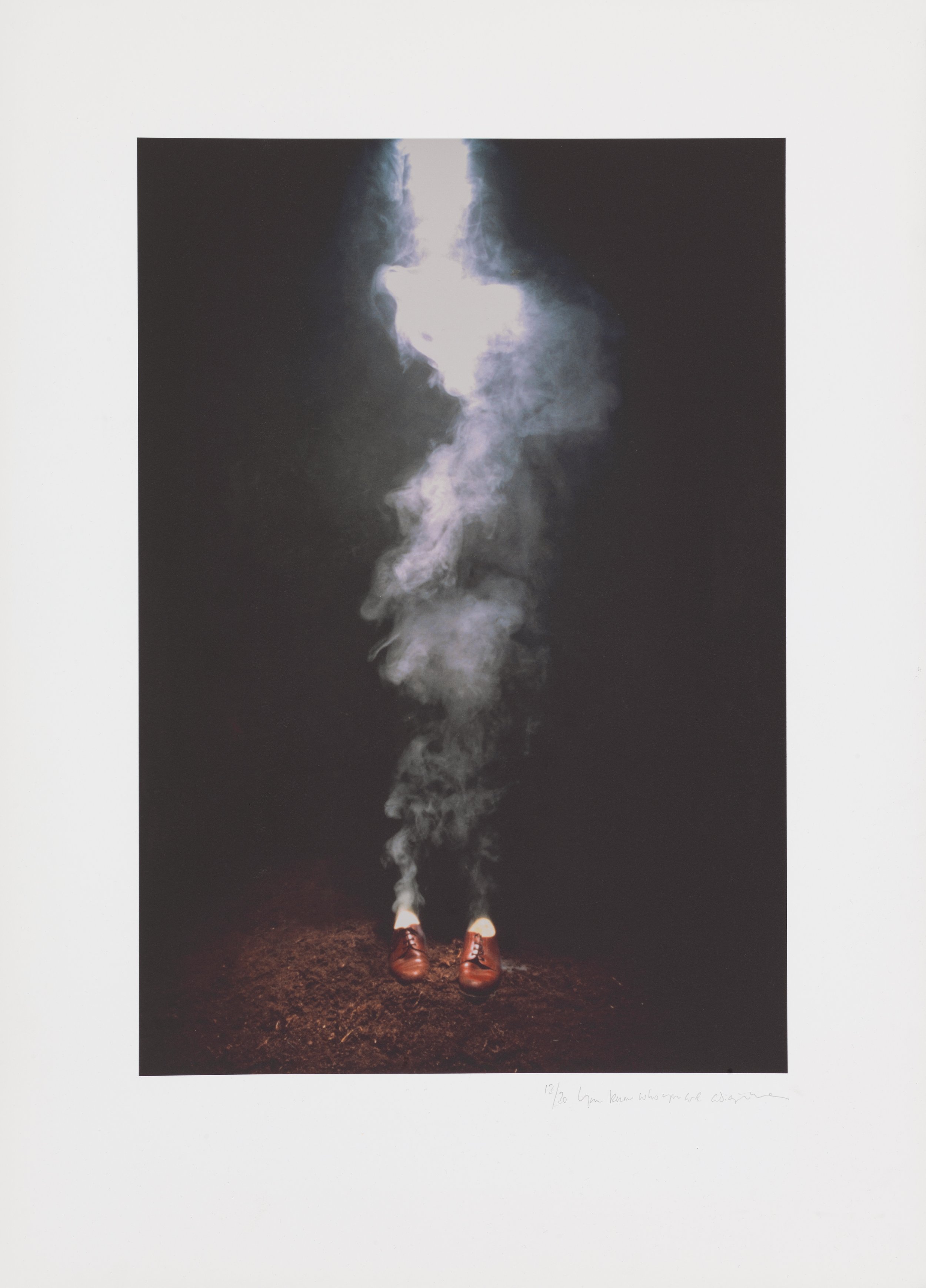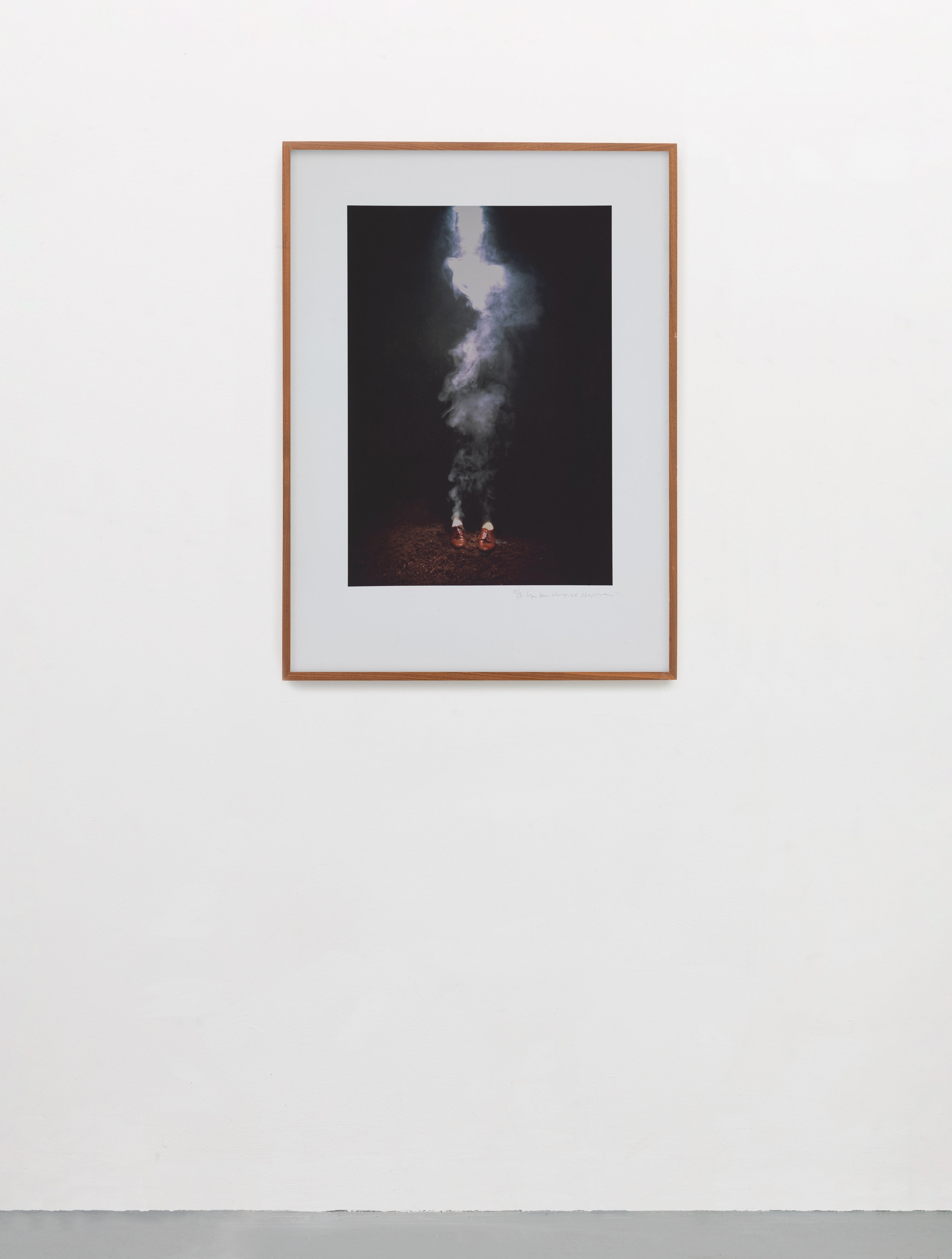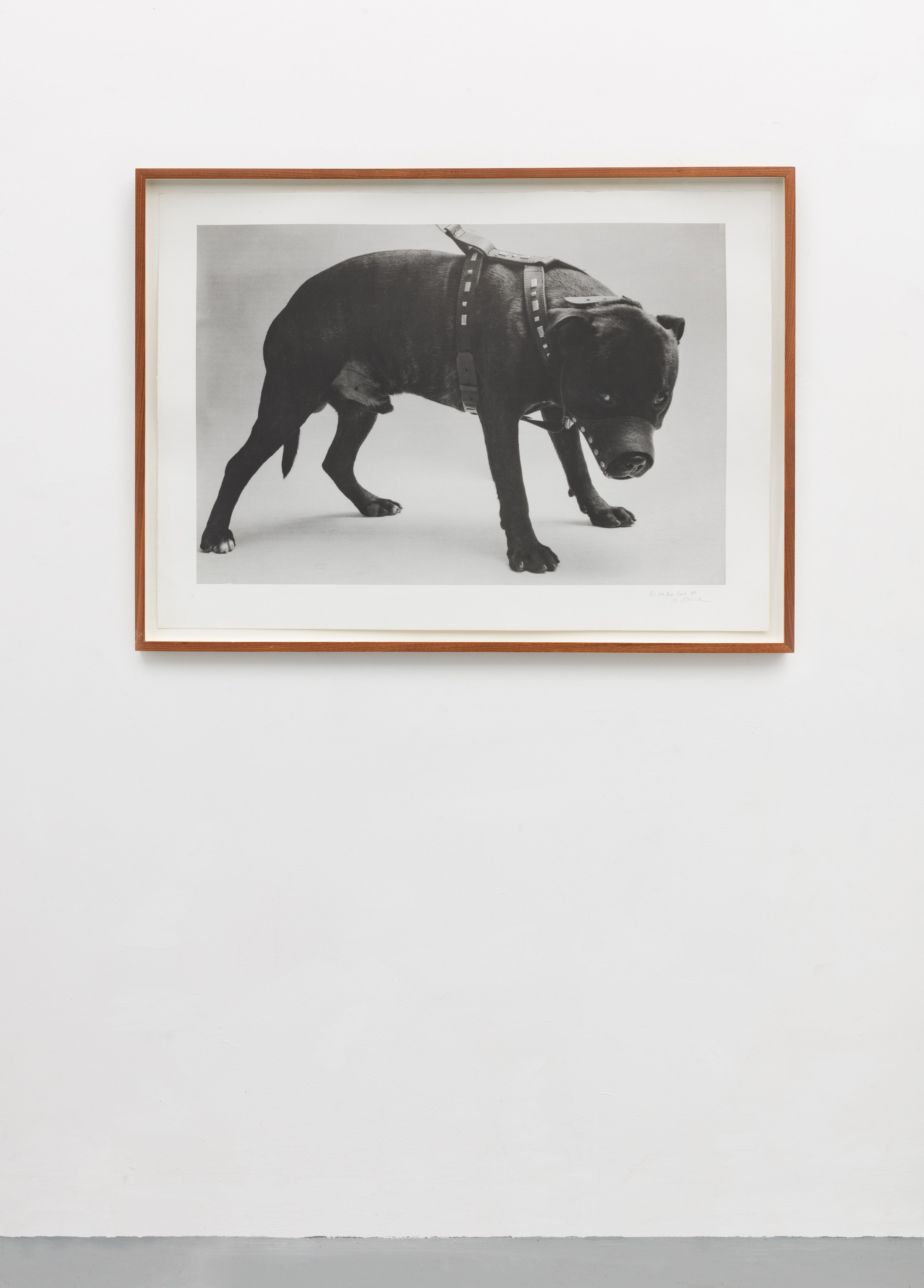'Re- Made II' by Colin Glen
Signed and dated
74.5 cm x 57.5 cm
Edition of 50
Unframed
The Re-made II drawing was made for the specific purpose of producing a print, extending my existing drawing technique to produce marks which the printing process would then enhance. The work investigates the idea of the straight copy; subsuming the process where the found object is documented photographically and enlists the imagination through lengthy period of 'observational' study. The drawing technique I have developed involves a kind of layering of pencil from almost imperceptibly light 9H to the darkest 8B. In this way the image develops gradually like a photograph, emerging from shadowy stain-like shapes towards having its own sense of presence. For me, making a study encourages a process of thinking about the issues of representation and reproduction - reflecting on the idea that there is no simple original and copy but instead a series of translations and interpretations from object to image in which a concept is realised in material form and vice versa the contemplation of the material can contribute towards forming ideas.
The specific object of the Bottlerack was chosen for the print due its significance as Marcel Duchamp's first readymade of 1914, a quotidian object that can still be acquired and used (for drying bottles) - but it is also an iconic image from the history of modern art known principally through its photograph taken by Man Ray - generally representing the move from the hand-made artwork to that in which ideas are more important.
Incidentally, the title Re-made takes the word 'readymade' and removes three letters to be instead about reproduction, but with something missing. In the process of titling the prints in 2H pencil you can see a ghost images of the letters which have been 'removed'.
Signed and dated
74.5 cm x 57.5 cm
Edition of 50
Unframed
The Re-made II drawing was made for the specific purpose of producing a print, extending my existing drawing technique to produce marks which the printing process would then enhance. The work investigates the idea of the straight copy; subsuming the process where the found object is documented photographically and enlists the imagination through lengthy period of 'observational' study. The drawing technique I have developed involves a kind of layering of pencil from almost imperceptibly light 9H to the darkest 8B. In this way the image develops gradually like a photograph, emerging from shadowy stain-like shapes towards having its own sense of presence. For me, making a study encourages a process of thinking about the issues of representation and reproduction - reflecting on the idea that there is no simple original and copy but instead a series of translations and interpretations from object to image in which a concept is realised in material form and vice versa the contemplation of the material can contribute towards forming ideas.
The specific object of the Bottlerack was chosen for the print due its significance as Marcel Duchamp's first readymade of 1914, a quotidian object that can still be acquired and used (for drying bottles) - but it is also an iconic image from the history of modern art known principally through its photograph taken by Man Ray - generally representing the move from the hand-made artwork to that in which ideas are more important.
Incidentally, the title Re-made takes the word 'readymade' and removes three letters to be instead about reproduction, but with something missing. In the process of titling the prints in 2H pencil you can see a ghost images of the letters which have been 'removed'.
Signed and dated
74.5 cm x 57.5 cm
Edition of 50
Unframed
The Re-made II drawing was made for the specific purpose of producing a print, extending my existing drawing technique to produce marks which the printing process would then enhance. The work investigates the idea of the straight copy; subsuming the process where the found object is documented photographically and enlists the imagination through lengthy period of 'observational' study. The drawing technique I have developed involves a kind of layering of pencil from almost imperceptibly light 9H to the darkest 8B. In this way the image develops gradually like a photograph, emerging from shadowy stain-like shapes towards having its own sense of presence. For me, making a study encourages a process of thinking about the issues of representation and reproduction - reflecting on the idea that there is no simple original and copy but instead a series of translations and interpretations from object to image in which a concept is realised in material form and vice versa the contemplation of the material can contribute towards forming ideas.
The specific object of the Bottlerack was chosen for the print due its significance as Marcel Duchamp's first readymade of 1914, a quotidian object that can still be acquired and used (for drying bottles) - but it is also an iconic image from the history of modern art known principally through its photograph taken by Man Ray - generally representing the move from the hand-made artwork to that in which ideas are more important.
Incidentally, the title Re-made takes the word 'readymade' and removes three letters to be instead about reproduction, but with something missing. In the process of titling the prints in 2H pencil you can see a ghost images of the letters which have been 'removed'.


